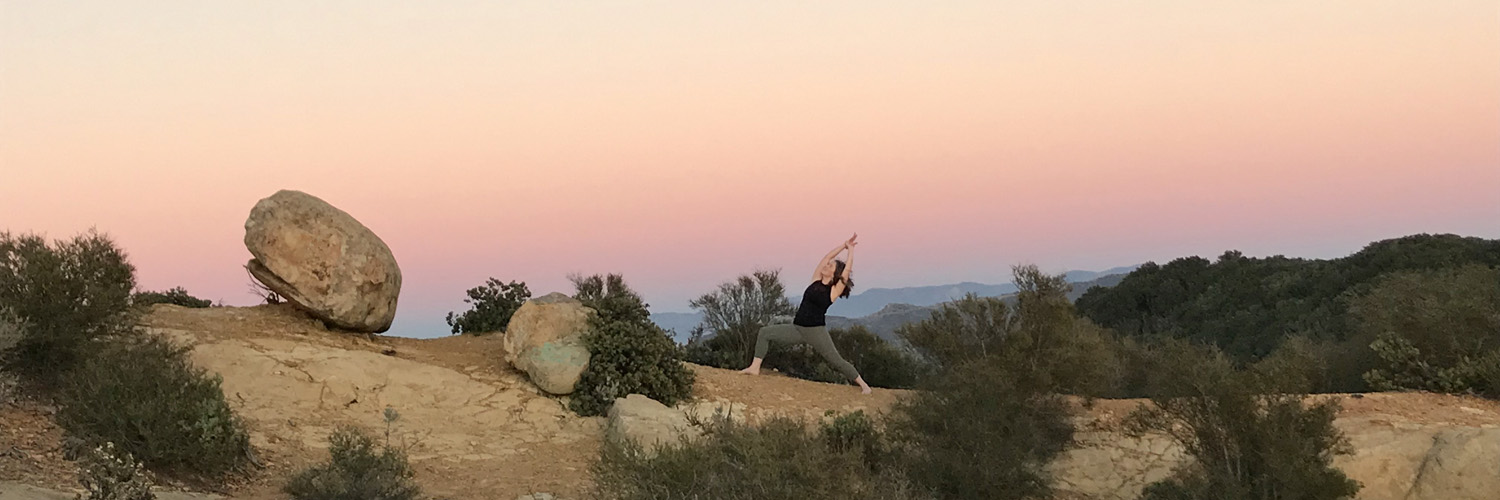
Svadhisthana Chakra or Sacral Chakra
Sva – “self” or “prana”
Adhistana – “dwelling place” “abode” or “seat”
The Svadhisthana Chakra is the Dwelling Place of the Self. It is our second chakra and it is located at our sacrum. It generates our sense of personal identity and psychological boundaries and governs our sensuality and our ability to connect deeply with others.
When Svadhisthana is open and healthy we feel passionate, worthy, vibrant, playful, and full of life. We feel creative, sensual, desirable, and we are able to express our emotions. We feel comfortable in your own skin and in our sexuality.
The second chakra starts to develop around age seven when the child begins to explore their power of choice, their individuality, and they start to form relationships of their own.
Svadhisthana Chakra is characterized by our need for relationships. Relationships are spiritual messengers… they teach us the lessons we need to thrive. Relationships teach us about our strengths and our weaknesses. They shine the light on our habitual patterns and opportunities for growth. We learn how to interact consciously with others, to nurture the relationships with those that support our growth and to discard the relationships that hold us back.
Svadhisthana Chakra at a Glance:
- Location: Sacrum and reproductive organs
- Element: Water
- Color: Orange/Vermillion
- Lotus: Six Petaled
- Bija Mantra: VAM
- Aspects: Procreation, family, fantasy, creativity, sexuality
- Sense: Taste
- Vayu: Apana
- Planet: Mercury
- Kosha: Pranamaya
Need a chakra primer? Check out these two articles introducing the chakras.
Seven Chakras Every Yogi Must Know

In Anatomy of the Spirit, Carolyn Myss defines the strengths of Svadhisthana as, “The ability and stamina to survive financially and physically on one’s own and to defend and protect oneself; the “fight or flight” instinct; the ability to take risks; the resilience to recover from loss whether of family members, partners, property, occupation, or finances; the power to rebel and reestablish a life and personal and professional decision-making ability and talent.”
Svadhisthana Chakra is characterized by the power of choice, the law of cause and effect. “Every choice we make contributes a subtle current of our energy to our universe, which is responsive to the influence of human consciousness.” Svadhisthana is associated with the unconscious mind and is considered the storehouse of our
“All the attachments by which we maintain control over our external lives, such as authority, other people, or money, are linked through this chakra to our energy field and physical body. The illnesses that originate in this energy center are activated by the fear of losing control.” Caroline Myss
When Svadhisthana Chakra is Imbalanced
An imbalanced sacral chakra can cause low libido, feelings of low vitality, reproductive problems (ovarian cysts, endometriosis, testicular or prostate disease), joint problems, back pain, urinary tract problems, constipation, IBS, muscle spasms, and dehydration.
On an emotional level, you may have trouble connecting with others, you may feel disconnected, your emotions may be unstable, you may express feelings of shame or guilt, you may struggle with vulnerability or experience lack of self-control and/or creativity.
A lot of heavy fears are also associated with our second chakra, from losing control to being dominated by a person, event or circumstance.
When the Second Chakra is overactive we may be attached to pleasure and suffer from addiction, gluttony, greed, obesity, hormone imbalances and/or restlessness.
An underactive Second Chakra often manifests as depression, decreased sex drive, feeling stuck, or a lack of passion and creativity. Its cause? Spending too much time focused on practicalities and not giving ourselves time to experience pleasure in its many forms.
Skip to the last section to find out how to bring your second chakra back into balance.
Svadisthana Chakra and the Water Element
Water is life-giving. Did you know that up to 60% of the adult human body is made of water and about 71% of Earth’s surface is water? As humans, water is present in our blood, mucus, urine, saliva, lymph and other body fluids as well as in our brain, heart, lungs, skin and it’s even in our bones… it’s everywhere.
Water is intimately connected with the moon… think of the tides of the ocean, which are connected to the lunar cycle. I’m sure you’ve also experienced the influence of the waxing and waning of the moon on your own body chemistry and emotions.

According to Harish Johari, the “lunar energy is evoked when the water element (which is dominant for 16 minutes in each nasal breath cycle of one hour) is accompanied by breathing dominated by the left nostril. Left nostril breathing activates Ida Nadi, which is lunar in nature. When the Ida Nadi is activated, it stimulates the right hemisphere of the brain, which is related to emotional behavior. Thus, in this chakra, we see the relationship between water, the moon, emotions, and the psyche.”
To awaken Svadisthana embody fluidity and flow in your movements, your mind and your breath.
The Svadhisthana Yantra and the Six-Petaled Lotus
The Svadhisthana Chakra is symbolized by a six-petaled lotus. As stated in the Mahanirvana Tantra, the six petals of Svadhisthana represent six mental modifications or vrittis:
- Affection (indulgence)
- Suspicion
- Disdain
- Delusion
- Destructiveness
- Pitilessness
The Bija Mantra for the Sacral Chakra
The bija mantra or seed sound for Svadhisthana Chakra is VAM. When chanted it guides Kundalini shakti up to the second chakra and increases the flow of prana (life force) to the second chakra.
The Second Chakra and Our Sense of Taste
When Svadhisthana Chakra is healthy, food is eaten not just for sustenance, it is enjoyed.
Svadhisthana Chakra and Apana Vayu
Svadisthana is associated with Apana Vayu. Apana is the Vayu that expels semen from the male organ and urine from the urethra, it is the energy behind passing a bowel movement and that which pushes the baby from the womb during birth. Think of “down and out” as the flow of Apana Vayu.
Tips and Practices for Svadhisthana Chakra
So now that we know more about the Svadhisthana Chakra, how do we bring it back into balance or keep it in balance?
Tips for an Underactive Second Chakra
If you’re feeling uninspired and you lack passion, make time to experience pleasure or joy. Paint, hike, draw, dance, create, swim in the sea, have sex, self-pleasure.
Try something new. Take a dance class. Learn martial arts. Do yoga. Tap into your artistic side. Prepare food for friends and family.
Tips for an Overactive Svadhisthana Chakra
If you’re feeling unable to control your physical desires or addiction, work on practicing brahmacharya (moderation — in it’s most modern translation). You may also choose to seek the help of a professional.
Much of the healing for the second chakra comes from healing past traumas. Now is the time to do the work and to heal. You can work with a professional, find guides online, or even journal. Journaling is an amazing practice to let go of past traumas and their associated pain, shame and guilt.
Tips and Practices for Anyone Interested in Healing Svadhisthana
Take a warm bath. No distractions. No phone. No kids/partners/pets. Time just for you. Bonus: add a few drops of your favorite essential oil. These oils are all great for the second chakra: Bergamot, Grapefruit, Lemongrass, Geranium, Rose, Ylang-Ylang, Jasmine, Neroli, Clary Sage and Patchouli.
Practice abhyanga or Ayurvedic self-massage. After your warm bath put an old towel down on the bathroom floor and oil yourself up with warming sesame oil. Use long strokes on your long bones and circular motions on your joints. Take your time and enjoy it. Or share the experience with a partner.

Come up with your own second chakra affirmation and write it in your journal, put it on your altar, and on your fridge.
Examples:
- I am a divine being of light.
- I embrace my sexuality and its expression.
- I am alive, connected, and aware.
- I am a vibrant, creative being of light.
Meditate. A simple sacral chakra meditation is to envision an orange wheel of light spinning at your sacrum. As you envision this orange wheel of light repeat your affirmation.
Crystals for Your Second Chakra
Set an intention to heal your second chakra and create a crystal grid to increase creativity, vitality, confidence, and sexuality. Use:
- Citrine (self-healing, increases energy and drive)
- Carnelian (removes blockages that may be causing sexual problems)
- Orange calcite (creative and sexual energy and increases confidence)
- Tangerine quartz (raises your vibration, healing after trauma, boosts self-esteem)
- Milky quartz (let go of
overwhelm ) - Selenite (unblocks stagnant energy and clears negative energy)
If your Second Chakra is overactive you might find it beneficial to create a crystal grid with:
- Blue or green
flourite (emotional balance) - Moonstone (creativity, intuition, harmony)
- M
ilky quartz (let go ofoverwhelm ) - Selenite (unblocks stagnant energy and clears negative energy)
Second Chakra Yoga Sequence

A yoga practice that includes watery, fluid, flowy, primal movements and hip openers will help balance the second chakra.
A lovely yoga practice for Svadisthana Chakra could include:
- Supta
baddha konasana : 3 minutes - Figure Four: (5 breaths each side) (rock legs side to side between sides)
- Come up to Tabletop Pose
- Cat/Cow x3
- Flow from Cow Pose to Child’s Pose 3-5x
- Primal hip circles 3-5x each way
- Downward Facing Dog: 5-10 breaths → pedal the legs and sway the hips side to side
- Wave the spine forward from downward facing dog to plank pose 5x
- Standing forward fold/Ragdoll–> Slow Roll up to Tadasana (Mountain Pose)
- Surya Namaskar A x3
- Downward Facing Dog to Anjaneyasana (Low Lunge) to Ardha Hanumanasana (Half Splits)–> Flow between Low Lunge and Ardha Hanumanasana 5x each side
- Dancing Warrior Sequence: Warrior 2 -> Reverse Warrior -> Side Angle (Flow from Reverse to Side Angle)
- Malasana 5 breaths
- Dancing Warrior Sequence above plus Star Pose to Skandasana on the opposite side (flow from right to left 3x) to Runner’s Lunge facing the front and flow between Runner’s Lunge and a modified Pyramid Pose by bending and straightening the front knee (3-5x), drop back knee and add a quad stretch
- Dancing Warrior Sequence above plus Goddess Pose between Star Pose and Skandasana -> Goddess (eagle arms and rock side to side) -> Wide Leg Forward Fold (5 breaths per pose; R side, then L side)
- Malasana 5-10 breaths or Crow Pose
- Warrior 2 -> Reverse Warrior ->Side Angle -> Triangle Pose -> Half Moon -> Ardha Chandra Chapasana
- Eka Pada Tadasana (standing on one leg with
other knee to chest, to Garudasana (Eagle Pose) to Standing Figure Four (like chair pose but with one ankle crossed over the thigh of the opposite leg), return to Tadasana. - Lizard (90 seconds) -> Add quad stretch
- Pidgeon (wave torso up & down 5x)
- Janu Sirsasana 5-10 breaths each side (wave your spine long on
your inhale and soften on your exhale) - Gomukhasana 10 breaths on each side
- Madukasana (Frog Pose or ½ Frog Pose) 10-20 breaths
- Child’s Pose 5 breaths
- Dynamic Bridge x3 and hold final round for 7-8 breaths
- Simple supine twist: 5 breaths each side
- Savasana: 10 minutes
Do you want to learn more about all the chakras? Check out our free chakra guide. Sign up for the newsletter and I’ll send it over! Option to sign up in the side bar and on the homepage.
XOXO,
Autumn

 Ambuja Yoga
Ambuja Yoga 


